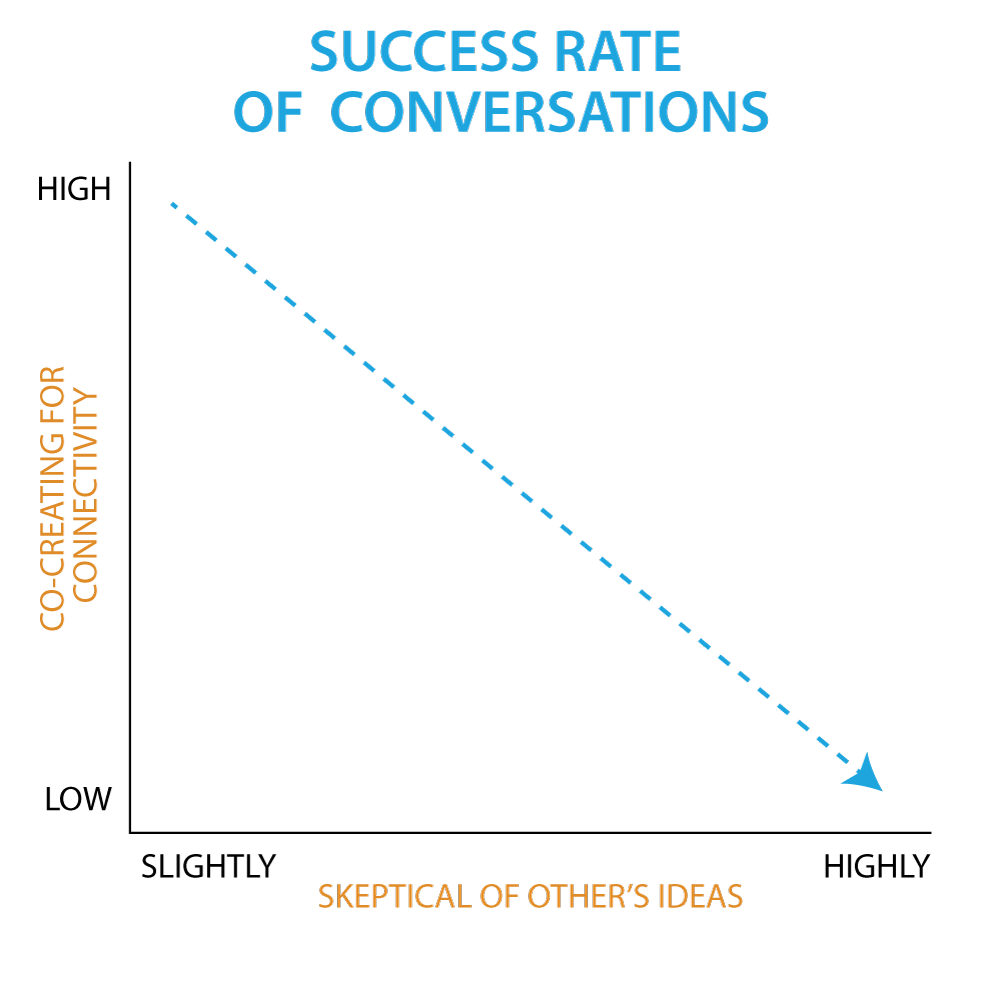By Nicklas Balboa
Published in: Psychology Today
The brain runs a monopoly on your energy, but what about your conversations?
There’s a common principle taught in undergraduate physiology courses that explains how powerful the human brain is. Despite making up approximately 2 percent of the body’s weight, the brain consumes approximately 20 percent of the body’s oxygen.1 This "2 for 20 Rule" recognizes that the brain is more than a thought generator between our ears. The brain regulates a variety of hormones, neurotransmitters, and plastic, functional neural responses that beget feelings, thoughts, actions, moods, and even epigenetic changes. It is no wonder that this small, fatty organ monopolizes our body budget.
 Every time we engage in conversation, a significant portion of our energy goes into the interaction. But just how efficiently do humans allocate this conversational energy? As it turns out, the 2 for 20 Rule does not only apply to the brain and body, it applies to the success of conversations.
Every time we engage in conversation, a significant portion of our energy goes into the interaction. But just how efficiently do humans allocate this conversational energy? As it turns out, the 2 for 20 Rule does not only apply to the brain and body, it applies to the success of conversations.
For example, in her work in Fortune 500 companies, Judith E. Glaser found that for every twenty conversations, only two resulted in a successful conversation. Another way to phrase that is 9 out of 10 conversations miss the mark.2 This research, based on tens of thousands of interviews and deconstructed conversations by Glaser, shows that time and time again conversational partners enter an engagement with different views of reality and leave the conversation with the same discord.
This number might seem jarring, however, in real-world business settings, skepticism and conflict are common. No conversation goes without its challenges. These conflicting views are often reflected by low levels of neural connectivity, which recent neuroscience has now proven to be a reliable predictor of the success rate of a conversation.
For example, a study from Princeton University using fMRIstudy from Princeton University using fMRI to record brain activity from both speakers and listeners during natural verbal communication shows how a speaker’s brain activity is coupled with the listener’s during successful communication.3 This coupling of brains, or synchrony, disappears when we fail to communicate. As we gain a greater biological understanding of our social selves, it becomes clear that successful communication relies on breaking down perceptual barriers (beliefs, aspirations, intentions) through the coupling of brain processes.
Here are three reasons why conversations so frequently miss the mark.
- Talking Past Each Other. This is the most common form of conversational discord that prevents conversational partners from reaching a mutual understanding through shared meaning. Try double-clicking on the meaning of specific words to unlock a deeper connection.
- Addicted to Being Right. Sometimes conversational partners appear to be curious, asking questions, and exploring each other’s positions. However, those who are addicted to being right tend to ask questions they already know the answers to, in an attempt to steer the conversation back towards their own position. Try asking more discovery questions and be open to others' influence.
- Oxytocin Overload. Oxytocin does a lot more than we previously thought. In addition to its role in trust, bonding, and childbirth, oxytocin plays a role in new cell growth, protection against stress, and promotes sensitivity towards an emotional stimulus. While oxytocin is the key to establishing trust and bridging the gap towards transformational conversations, too much can actually lead to feelings of exhaustion. This turns what was once a meaningful conversation into an endless, inescapable discussion. If all of this talk does not lead to any action, try refocusing and reframing the conversation in order to convert ideas into executable actions.
Conclusion
To overcome these compounding factors, deconstruct conversations and create learning opportunities to enhance conversational agility. Not every conversation demands transformational energy. Understanding how to access the right dimension for a situation is the art of conversation.
References
- Raichle, M., & Gusnard, D. (2002, August 06). Appraising the brain's energy budget. Retrieved from https://www.pnas.org/content/99/16/10237.full
- Glaser, J. E. (2018). 9/10 Conversations Miss the Mark. The CreatingWE® Institute
- Stephens, G., Silbert, L., & Hasson, U. (2010, August 10). Speaker–listener neural coupling underlies successful communication. Retrieved from https://www.pnas.org/content/107/32/14425









